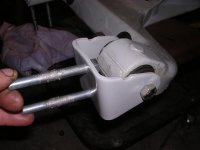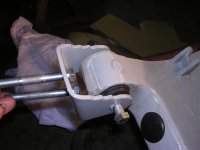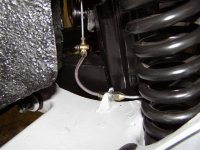Online
Hello everyone....
Having just completed my restoration of my '73 TR6 in February, I am now facing a setback :eeek:
Yesterday I took the car in to get new tires and a four wheel alignment. The guy who does the alignment told me he worked on my car but was not able to set the alignment.... he told me that the height is different; the drivers side is lower than the passenger side. He asked if I installed new springs when I did the rebuild--- unfortunately, I used original springs.
OK, so now I am faced with installing new springs and my questions are:
<span style="font-weight: bold">Where to buy them from?</span> Rimmers currently has them on sale and are quite a bit less than the typical vendors here.
Now that the body is back on the chassis, <span style="font-weight: bold">how big a job is it to replace all four springs?</span>
I have the Bentley manual, <span style="font-weight: bold">is there something better I should consider using for this process?</span>
Lastly, <span style="font-weight: bold">how can I set the trailing arm brackets correctly?</span>
I put them back in the same way they came out but obviously, that is not right.
Thanks for any asistance in helping me do the job correctly!
Having just completed my restoration of my '73 TR6 in February, I am now facing a setback :eeek:
Yesterday I took the car in to get new tires and a four wheel alignment. The guy who does the alignment told me he worked on my car but was not able to set the alignment.... he told me that the height is different; the drivers side is lower than the passenger side. He asked if I installed new springs when I did the rebuild--- unfortunately, I used original springs.
OK, so now I am faced with installing new springs and my questions are:
<span style="font-weight: bold">Where to buy them from?</span> Rimmers currently has them on sale and are quite a bit less than the typical vendors here.
Now that the body is back on the chassis, <span style="font-weight: bold">how big a job is it to replace all four springs?</span>
I have the Bentley manual, <span style="font-weight: bold">is there something better I should consider using for this process?</span>
Lastly, <span style="font-weight: bold">how can I set the trailing arm brackets correctly?</span>
I put them back in the same way they came out but obviously, that is not right.
Thanks for any asistance in helping me do the job correctly!

 Hi Guest!
Hi Guest!

 smilie in place of the real @
smilie in place of the real @
 Pretty Please - add it to our Events forum(s) and add to the calendar! >>
Pretty Please - add it to our Events forum(s) and add to the calendar! >> 




 or two!
or two!